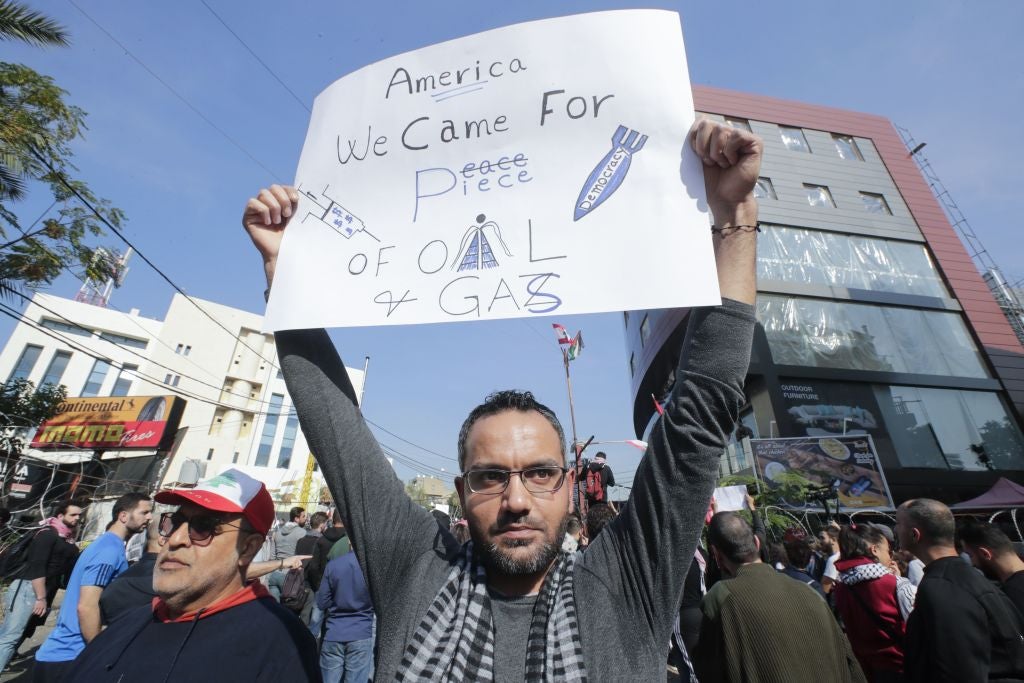
The US Government is close to completing one of the most expensive embassies in US history, with a $1bn price tag that matches its now-famous London site. This time it is Lebanon – far from a mammoth economy like the UK – that is home to the new project which, in terms of land, is almost two-and-a-half times the size of the White House estate.
Lebanon, a country of just six million people (and roughly two million refugees), is three years into a multifold economic crisis that has little historic precedent on a global basis. Plans for the US embassy were announced back in 2015, with construction taking place two years later (many months before the current economic meltdown). Completion is expected by the end of 2023, or early in 2024. The project has made headlines in recent weeks following the release of aerial pictures that display the sheer size of the gargantuan site, which currently resembles a more-attractive-than-average Soviet military bunker. Lebanese Twitter sent these images viral, drawing ire from many directions:

Discover B2B Marketing That Performs
Combine business intelligence and editorial excellence to reach engaged professionals across 36 leading media platforms.
“Let them eat concrete.”
“Did the US move to Lebanon?”
“Maybe you’ll have enough room to work on all those pending visa applications.”
Other commentators have criticised the geopolitical implications of the project, as well as the optics of such a lavish and opulent site in the country where nearly 80% of the population lives below the poverty line. On the other hand, the harsh reality is that Lebanon is undergoing a severe economic crisis, and a $1bn megaproject is a welcome sight for a country where foreign direct investment has all but dried up in recent years, while domestic investment (especially across real estate) has decreased enormously.

US Tariffs are shifting - will you react or anticipate?
Don’t let policy changes catch you off guard. Stay proactive with real-time data and expert analysis.
By GlobalDataThe economic impact of the new US Embassy in Lebanon
Located in the suburb of Aoukar approximately 16km north-east of Beirut’s historic core, the US’s multi-building embassy will “provide a safe, secure, sustainable and modern platform that supports US staff”, according to the website of the US Embassy in Lebanon.
Like all US embassies built from scratch, the site is under the care of the Overseas Buildings Operations (OBO), a US government agency that directs the worldwide overseas building programme for the US Department of State and the US Government community serving abroad.
For the architecture of the project, OBO hired California-based Morphosis Architects and Alabama-based BL Harbert International as the construction contractor, both of which set up a dedicated team based in Beirut. Some critics have said that the project should have been designed by a local Lebanese architecture firm, but US security procedures dictate that the knowledge remains in-house, so to speak. However, an anonymous source tells Investment Monitor that, for all new US embassies, the construction materials are procured from the States, even if they are available locally at a cheaper price. Concrete, nails, screws, glass, granite tiles, etc; Everything is shipped directly from the US, to the tune of millions and billions of dollars. Investment Monitor reached out to the US Embassy in Lebanon for comment, but did not receive response. Once again, security may be the reasoning behind such an (allegedly) US-centric supply chain. Or mere mercantilism.
It is worth nothing that in 1983, a suicide bombing at the US Embassy in Beirut killed 17 Americans, 32 Lebanese and 17 visitors of different nationalities, only then to be followed by another embassy attack months later that killed 20 Lebanese and 2 Americans. That same year in Lebanon, 241 Americans were killed at a marine base in what remains one of the deadliest suicide bombing attacks in US military history.
Although today’s new embassy has been designed by US companies, the actual construction site has created thousands of direct and indirect jobs for the Lebanese economy since work began in 2017, not to mention the hundreds of jobs that will be created (direct and indirectly) once the building is operational, based on estimates made by Investment Monitor (as the US Embassy in Lebanon did not respond for comment). As a rough point of comparison, more than 10,000 personnel work at the US premises in Baghdad, which cost $750m to construct back in 2003.
A US project of this size, in Lebanon, was always going to be divisive. As its completion nears in the coming months, media attention and online debate will inevitably flare up. For those who welcome the US agenda in Lebanon and the Middle East, the new embassy will be a reassuring symbol of long-term commitment and investment. For those who do not, it will remain a source of suspicion and tension, as well as a target for criticism.





